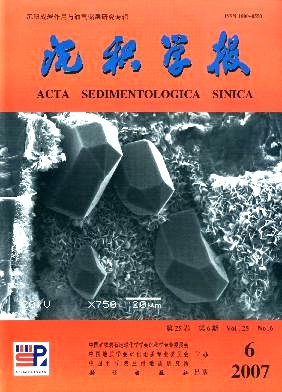Influence of Early Carbonate Cementation on the Evolution of Sandstones:a case study from Silurian sandstones of Manjiaer depression, Tarim basin
- Received Date: 1900-01-01
- Rev Recd Date: 1900-01-01
- Publish Date: 2007-12-10
-
Key words:
- carbonate cementation /
- porosity evolution of sandstones /
- influence /
- Manjiaer depression /
- Silurian
Abstract: Silurian sandstones of Manjiaer depression, Tarim basin deposited in the tidal, beach and braided delta environment, which are litharenite and quartzarenite. The study on the diagenesis, especially carbonate cementation history, sandstone porosity between northern Manjiaer and EasternSouthern Manjiaer indicates that the carbonate cementation time in sandstones has important influence on the porosity of sandstones. An abundant carbonate cements developed in sandstones in northern Manjiaer. These cements were formed before the thorough compaction of sandstones by the microscopical study because the sandstone grains are isolated in the carbonate cements. These cementations restrained the late compaction of sandstones. Although the buried depth of Silurian sandstones in northern Manjiaer only is 5 000~6 500 m, the compaction of sandstones is feeble, a great deal of carbonate cements exist in the sandstones around or between the grains of sandstones. The carbonate cements were dissolved lately and generated an abundant porosity. However, in the eastern and southern Manjiaer area, the cementation of carbonate took place after the thorough compaction of sandstones and carbonate cements were distributed in the limited space between sandstone grains. Thus late dissolution only generated less porosity compared with northern Manjiaer area although they were with shallow buried denpth(3 700~5 000 m). This is related mainly to the time of carbonate cementation. Early carbonate cementation saved the intergranular space and provide the late dissolution, thus controles on the evolution of porosity of sandstone.
| Citation: | ZHONG Dakang. Influence of Early Carbonate Cementation on the Evolution of Sandstones:a case study from Silurian sandstones of Manjiaer depression, Tarim basin[J]. Acta Sedimentologica Sinica, 2007, 25(6): 885-890. |






 DownLoad:
DownLoad: